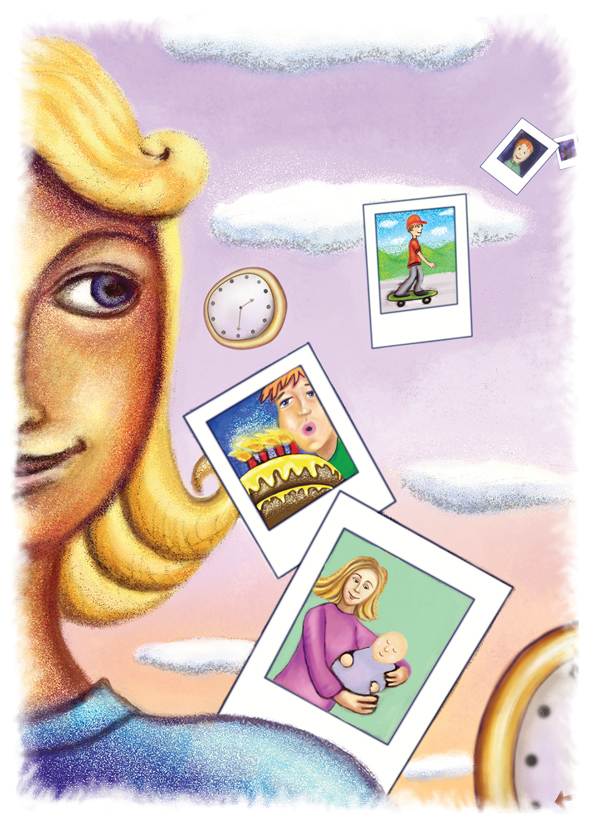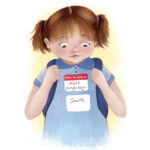
16 Oct Holding Onto Childhood—Why Some Memories Stick and Others Fade
Kate Gorringe-Smith considers the qualities of the mental images we hold of our own families, and how others remember our children.
Parents see daily change, but it’s relatives who hold vivid snapshots. Why memory works this way—and how to treasure your child’s fleeting stages.
The Familiar Family Cliché
We’ve all been there. At a family gathering, a rarely seen aunt pinches your cheek, takes a step back, and declares in awe, “My, how you’ve grown!”
As a child, you roll your eyes and dash away. As an adult, though, you hear the truth beneath the cliché: time passes, children change quickly, and those changes are often more startling to someone who has been absent. For Aunt Elsie, the little boy she last knew at six is now a tall 10-year-old, and she is caught in the shock of time’s relentless march.
The Privilege of Absence
Parents live inside the blur of their children’s growth. Each day overwrites the one before, so it becomes difficult—sometimes impossible—to recall how our children once looked or sounded. By contrast, relatives who dip in and out of a child’s life hold what I call “snapshot memories.” They remember discrete stages: the scruffy six-year-old, the laughing 10-year-old, the awkward teen. Their absence grants them a unique privilege—a preserved gallery of images that parents rarely retain.
As a mother, I often struggled with this. When my babies were five months old, I could no longer remember their newborn faces. At three, their two-year-old selves had already faded. Even with my third child, I stared and stared at him as a newborn, trying desperately to burn the memory into my retinas. Yet when I look at his first photos, I realise that moment has slipped away, lost under layers of the present.
 A Holiday Snapshot Returns
A Holiday Snapshot Returns
Recently, I was gifted a vivid reminder of this phenomenon. My eldest, Kezia, is now nearly nine. But while holidaying with my mother-in-law, I returned to a park I hadn’t visited since Kezia was 18 months old. Instantly, memories came flooding back: her giggles on a tandem bike ride, her fascination with pebbles, her sticky gelato smile beneath the marble busts of local dignitaries.
What struck me most wasn’t just the clarity of those images, but the rediscovery of how wholly absorbed my husband and I were in her then. Before her brothers arrived, our attention was singular, our delight undivided. For a brief moment, I could feel that early parenthood intensity again—a snapshot of joy that distance in time had kept intact.
Why Parents Forget
There’s a bittersweet truth here: being present often means forgetting. Daily life with children is relentless, layered, and noisy. The constant stream of moments makes it nearly impossible to hold onto earlier versions of them. Parents don’t lack love or attention—it’s simply that the present overwrites the past.
In contrast, infrequent encounters with children give relatives a sharper focus. They don’t see the daily, subtle shifts, so their minds fix on frozen portraits—clear, bright, and untarnished. That’s why Aunt Elsie’s “My, how you’ve grown” is less a cliché than an honest reflection of her lived experience of your child.
A Nephew’s Timeline in Memory
This lesson crystallised for me through James, my husband’s half-brother in America. Despite the distance, we’ve been closely connected, seeing him at intervals over the years. James recently turned 18, yet I can call to mind each age I’ve witnessed: the overheated baby crying at a Fourth of July parade, the mischievous eight-year-old who beat me at chess, the quiet boy at our wedding, the lanky teenager loping away at a cross-country race.
I may not have daily memories of James, but I do have something equally precious—a timeline of vivid snapshots, each preserved by the gaps in between.
And so, whether it’s your own child or someone else’s, the truth always lands the same way: my, how they’ve grown.
Illustration by Aleysha Howarth




